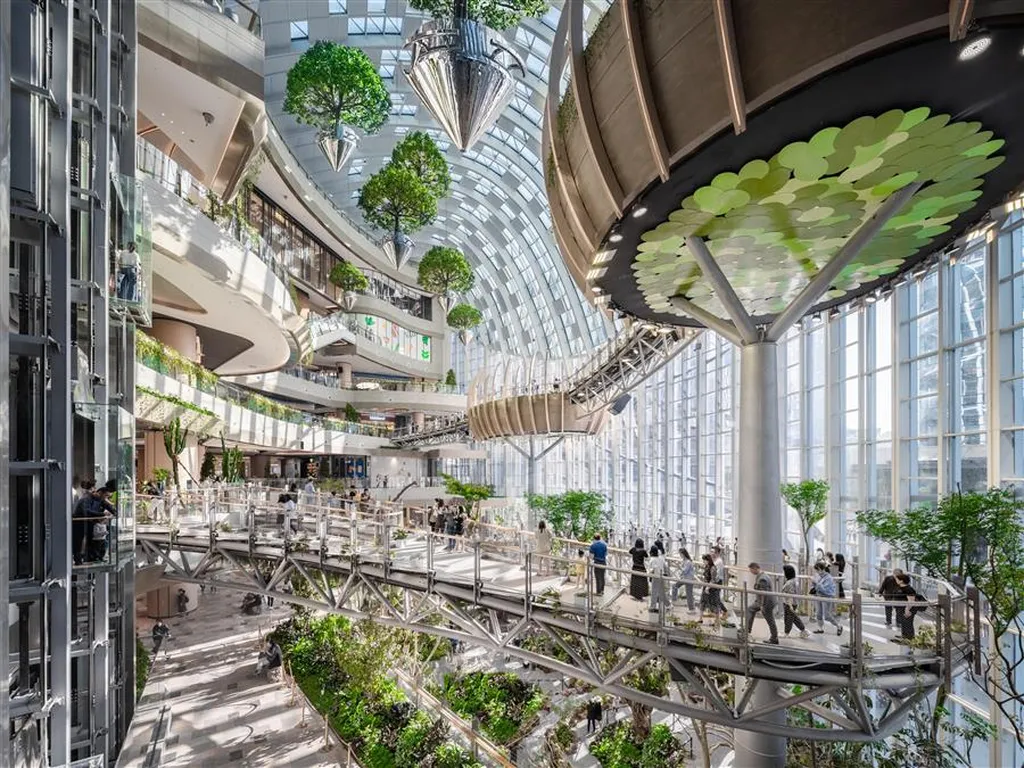In the relentless pursuit of sustainable construction, a groundbreaking study has emerged from the School of Civil Engineering at Chongqing Jiaotong University, led by Zhongming Li. The research, published in Case Studies in Construction Materials, delves into the intricate dance between humidity, carbonation, and a promising low-carbon cement alternative known as limestone calcined clay cement (LC3). The findings could revolutionize the construction industry’s approach to reducing carbon emissions while enhancing material performance.
Imagine a future where our buildings are not just structures but beacons of sustainability, where the very materials that hold them together are part of the solution to climate change. This future might be closer than we think, thanks to the innovative work of Li and his team. Their study explores the synergistic effects of CO₂ curing and ambient humidity on the mechanical performance and microstructure of LC3, a cement that replaces a significant portion of traditional clinker with limestone and calcined clay.
The construction industry is a significant contributor to global carbon emissions, with cement production alone accounting for about 8% of the total. The quest for low-carbon cement technologies is therefore not just a scientific endeavor but a necessity for a sustainable future. LC3 has already shown great promise in reducing emissions, and CO₂ curing, a process where concrete is exposed to carbon dioxide to enhance its properties, has been gaining traction as a viable method to further improve performance.
Li’s research takes this a step further by investigating how different humidity levels during the CO₂ curing process affect the strength and microstructure of LC3. The results are compelling. At an optimal cement replacement level of 30%, the compressive strength of LC3 increased by up to 18.8% under high-humidity carbonation (95%) compared to non-carbonated reference samples. “High humidity during carbonation facilitated the formation of calcium carbonate and C-S-H gels, leading to a denser microstructure with reduced porosity and crack formation,” Li explains. This means that not only does LC3 perform better under these conditions, but it also does so in a way that is more resilient and durable.
The implications for the energy sector are profound. As the world transitions to cleaner energy sources, the demand for sustainable construction materials will only increase. LC3, with its reduced carbon footprint and enhanced performance, could become a staple in the construction of energy-efficient buildings and infrastructure. Moreover, the process of CO₂ curing itself offers a unique opportunity for carbon capture and utilization, where CO₂ emissions from industrial processes can be repurposed to enhance the properties of construction materials.
The study also opens up new avenues for research and development. As Li points out, “These findings demonstrate that combining LC3 with humidity-optimized CO₂ curing offers a robust pathway toward high-performance, low-carbon cementitious materials.” Future research could explore the scalability of this process, its economic viability, and its potential applications in different construction scenarios.
In the grand scheme of sustainable construction, this research is a significant step forward. It challenges us to think beyond traditional materials and methods, to consider the role of humidity and carbonation in enhancing performance, and to envision a future where our buildings are not just structures but active participants in the fight against climate change. As the construction industry continues to evolve, studies like this one will undoubtedly shape the future of sustainable building practices, paving the way for a greener, more resilient world.

